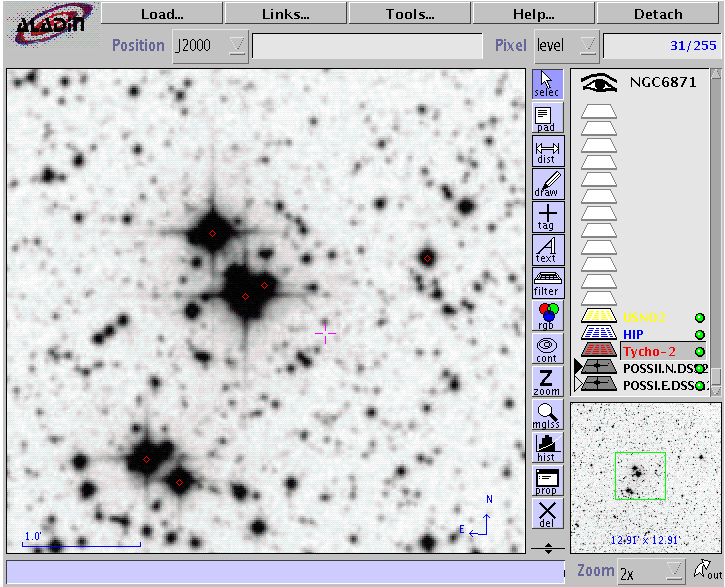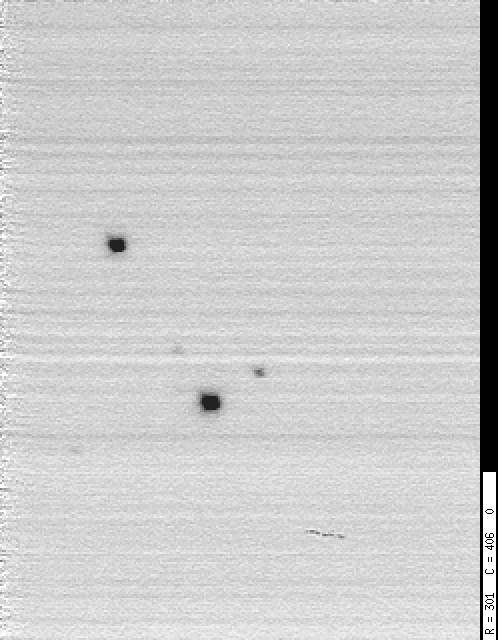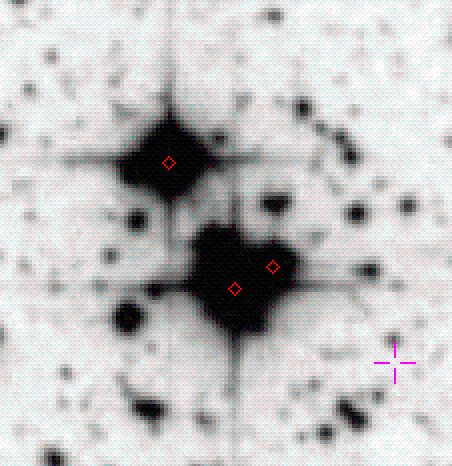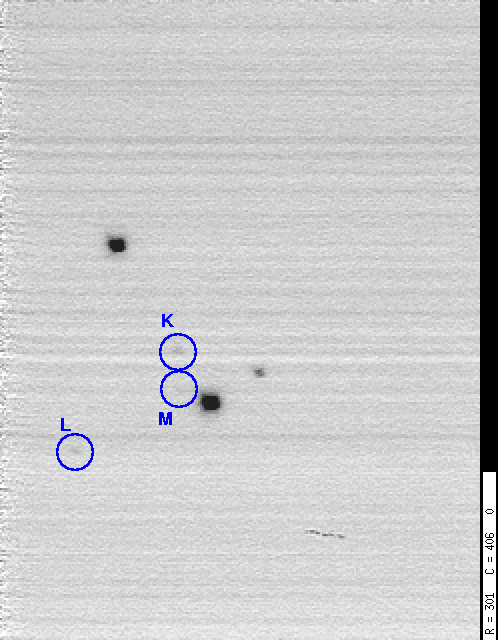
The night of Sep 02/03, 2004, EDT, was very clear in Rochester (a rarity for the summer of 2004). I recently installed a new control program for my ToUCam and wanted to test it out. In my past tests,
I used a control program which didn't tell me exactly the exposure time or frame transfer rate. This time, I would know for sure.
My target object was the open cluster NGC 6871, which is a relatively rich cluster with some bright stars and passes nearly overhead in Rochester. Here's a closeup of the field from the Palomar Sky Survey:

With the ToUCam attached to the RIT Observatory's 16-inch telescope at f/15 Cass focus, the field of view is very small. I couldn't use the finder to center a star well enough to cause it to fall onto the camera; I had to take off the camera, put in an eyepiece, center the star in the eyepiece, then put the camera back in place. A big pain. I should get one of those flip-mirror devices that lets one leave an eyepiece and a camera both affixed simultaneously ...
The night was pretty warm: air temperature was about 17 degrees Celsius during these tests. I imagine the ToUCam was about the same temperature.
I played with the controls, but settled on
Note added 9/5/2004: After reading ToUCam exposure tests made by Peter Katreniak, I see now that the actual exposure time was about 1/5 second, not 1/25 second.
I took a set of 190 images and used Registax to align and co-add them together; the effective exposure time is about 33 seconds. I've flipped and rotated the image to give it the same orientation as the chart above: North up, East to the left, with a field size of about 2-by-1.5 arcminutes.


The three brightest stars in this image are the three at the center of the chart with little red diamonds. I call them "A", "B" and "C".

But there are three other stars I can make out very faintly. Well, two for sure; the third is not definitely detected:

I looked up the magnitudes of these stars in two sources: the Tycho catalog, for stars A and B, and a paper on The Initial Mass Function and Massive Star Evolution in the OB Associations of the Northern Milky Way by Massey et al. (1995).
star B (or Bt) V (or Vt) source ------------------------------------------------------- A 6.89 6.78 Tycho-2 B 7.48 7.29 Tycho-2 C 9.84 9.67 Massey K 12.19 11.11 Massey L 11.65 11.40 Massey M 12.16 11.93 Massey -------------------------------------------------------
I recall being able to see star C clearly, though faintly, in individual raw images in the video stream. However, stars K and L aren't really visible in the original video; they appear above the noise only in the coadded image.
This appears to confirm the results of my previous tests: the video output of the ToUCam on our 16-inch f/15 telescope shows stars down to tenth magnitude. Coadding several hundred frames gains another magnitude or so.
I pointed the telescope to M15, but saw absolutely nothing in the video output. Sigh.